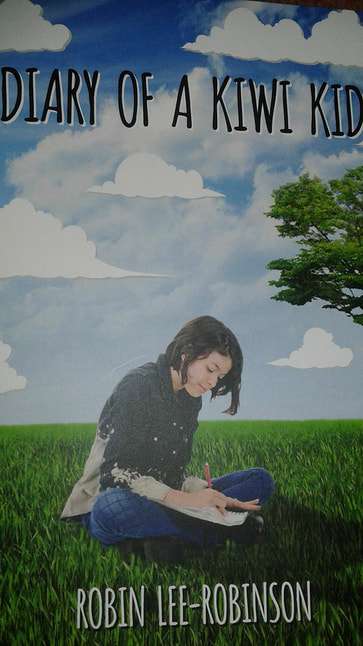
by Robin Lee-Robinson
The greater part of this book is in the form of a diary kept by nine year old Rosalyn Jondell a Gisborne schoolgirl in 1977.
Preceding this is a ten page introduction written by her grandson, fourteen year old Jack Jondell, documenting his family’s whakapapa and how he came to have access to the diary. I had to refer back to these pages several times while reading the book – but maybe this says more about me than Jack.
He refers to the mystery surrounding his grandmother Rosalyn’s disappearance at the age of eighteen.
The following 105 pages constitute Rosalyn Jondell’s diary and give insights into the minutiae and vernacular of her schooldays.
As a nine year old the writer of the diary, Rosalyn, regards herself as a house slave, albeit a sophisticated one, doesn’t like her name, and is already developing leanings towards political activism. These aspirations inspire her to attend a young writers’ course with the objective of eventually becoming a writer. Meanwhile she is not averse to undertaking practical projects such as building go-carts, with her father’s help. She tends to make assumptions about people, which are often proved to be wrong, but give authenticity to the fact that the diary was being written by a young person.
The book’s author tactfully speculates how nine year olds might be confused by adult same sex relationships. Even though the title of the book suggests it may be suitable for young readers I would hesitate to recommend it to an immature young person unless I knew their level of understanding of sexuality.
There is mention of one or two things which I feel would have been misplaced on a time scale. For example Cabbage Patch dolls did not become a craze until 1983 and this would have been in the USA and not available to the Gisborne public by 1977. And wet wipes were not commonplace in provincial New Zealand at that time. These are only trivial details which need not detract from the story and would probably go unnoticed by modern teenagers who are the likely target readers.
Most books are complete in themselves and have a denouement, even in a series. In this case we will have to wait for a subsequent book for the mystery to be resolved which some readers would find disappointing.
The inclusion of a glossary of Maori words and phrases is a useful addition and the book has an attractive cover which is nice to the touch.
My appetite is whetted and I would read more books in the series.
By: Robin Lee-Robinson
Publisher: Red Hen Books
ISBN: 978 -0-473-45519-4 (p/b)
RRP: $25
Available: Print only, via bookstores, public libraries and viaRed Hen Books, P.O. Box 503, Opotiki 3162

 RSS Feed
RSS Feed
